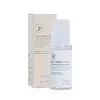What's inside
What's inside
 Key Ingredients
Key Ingredients

 Benefits
Benefits

 Concerns
Concerns

 Ingredients Side-by-side
Ingredients Side-by-side

Melaleuca Alternifolia Leaf Water
AntimicrobialButylene Glycol
HumectantGlycerin
HumectantWater
Skin ConditioningPropanediol
Solvent1,2-Hexanediol
Skin ConditioningPentylene Glycol
Skin ConditioningBetaine
HumectantPolyglyceryl-10 Laurate
Skin ConditioningMelaleuca Alternifolia Leaf Extract
PerfumingDipotassium Glycyrrhizate
HumectantPanthenol
Skin ConditioningSodium Hyaluronate
HumectantSalix Nigra Bark Extract
Skin ProtectingSalix Alba Bark Extract
AstringentMacadamia Integrifolia Seed Oil
Skin ConditioningCaprylyl Glycol
EmollientArginine
MaskingXanthan Gum
EmulsifyingCarbomer
Emulsion StabilisingMelaleuca Alternifolia Leaf Oil
AntioxidantMelaleuca Alternifolia Leaf Water, Butylene Glycol, Glycerin, Water, Propanediol, 1,2-Hexanediol, Pentylene Glycol, Betaine, Polyglyceryl-10 Laurate, Melaleuca Alternifolia Leaf Extract, Dipotassium Glycyrrhizate, Panthenol, Sodium Hyaluronate, Salix Nigra Bark Extract, Salix Alba Bark Extract, Macadamia Integrifolia Seed Oil, Caprylyl Glycol, Arginine, Xanthan Gum, Carbomer, Melaleuca Alternifolia Leaf Oil
Water
Skin ConditioningNiacinamide
SmoothingButylene Glycol
HumectantPanthenol
Skin ConditioningPentylene Glycol
Skin ConditioningAcrylates/Acrylamide Copolymer
MoisturisingMelaleuca Alternifolia Leaf Oil
AntioxidantParaffinum Liquidum
EmollientXanthan Gum
EmulsifyingCitric Acid
BufferingDisodium EDTA
Polysorbate 85
Emulsifying10-Hydroxydecanoic Acid
Skin ConditioningSebacic Acid
Buffering1,10-Decanediol
SolventLimonene
Perfuming
 Reviews
Reviews

Ingredients Explained
These ingredients are found in both products.
Ingredients higher up in an ingredient list are typically present in a larger amount.
Butylene Glycol (or BG) is used within cosmetic products for a few different reasons:
Overall, Butylene Glycol is a safe and well-rounded ingredient that works well with other ingredients.
Though this ingredient works well with most skin types, some people with sensitive skin may experience a reaction such as allergic rashes, closed comedones, or itchiness.
Learn more about Butylene GlycolThis tea tree oil comes from the leaves of the Tea Tree plant. Tea tree oil has antioxidant, anti-inflammatory, and antimicrobial properties.
According to the book Journal of Profiles of Drug Substances, tea tree helps in reducing acne-causing bacteria such as Propionibacterium acnes. This is due to the Terpinen components of tea tree oil.
Tea tree may cause sensitivity and irritation for some people. This oil naturally contains fragrance such as linalool and limonene.
However, research shows irritation usually occurs when using pure tea tree oil and not in cosmetic products.
Tea tree oil was found to help relieve the symptoms of psoriasis in one study.
Tea tree oil is toxic when ingested. Another study showed it to caused damage to the nervous system of dogs and cats when applied to their skin or given orally.
Learn more about Melaleuca Alternifolia Leaf OilPanthenol is a common ingredient that helps hydrate and soothe the skin. It is found naturally in our skin and hair.
There are two forms of panthenol: D and L.
D-panthenol is also known as dexpanthenol. Most cosmetics use dexpanthenol or a mixture of D and L-panthenol.
Panthenol is famous due to its ability to go deeper into the skin's layers. Using this ingredient has numerous pros (and no cons):
Like hyaluronic acid, panthenol is a humectant. Humectants are able to bind and hold large amounts of water to keep skin hydrated.
This ingredient works well for wound healing. It works by increasing tissue in the wound and helps close open wounds.
Once oxidized, panthenol converts to pantothenic acid. Panthothenic acid is found in all living cells.
This ingredient is also referred to as pro-vitamin B5.
Learn more about PanthenolPentylene glycol is typically used within a product to thicken it. It also adds a smooth, soft, and moisturizing feel to the product. It is naturally found in plants such as sugar beets.
The hydrophilic trait of Pentylene Glycol makes it a humectant. As a humectant, Pentylene Glycol helps draw moisture from the air to your skin. This can help keep your skin hydrated.
This property also makes Pentylene Glycol a great texture enhancer. It can also help thicken or stabilize a product.
Pentylene Glycol also acts as a mild preservative and helps to keep a product microbe-free.
Some people may experience mild eye and skin irritation from Pentylene Glycol. We always recommend speaking with a professional about using this ingredient in your routine.
Pentylene Glycol has a low molecular weight and is part of the 1,2-glycol family.
Learn more about Pentylene GlycolWater. It's the most common cosmetic ingredient of all. You'll usually see it at the top of ingredient lists, meaning that it makes up the largest part of the product.
So why is it so popular? Water most often acts as a solvent - this means that it helps dissolve other ingredients into the formulation.
You'll also recognize water as that liquid we all need to stay alive. If you see this, drink a glass of water. Stay hydrated!
Learn more about WaterXanthan gum is used as a stabilizer and thickener within cosmetic products. It helps give products a sticky, thick feeling - preventing them from being too runny.
On the technical side of things, xanthan gum is a polysaccharide - a combination consisting of multiple sugar molecules bonded together.
Xanthan gum is a pretty common and great ingredient. It is a natural, non-toxic, non-irritating ingredient that is also commonly used in food products.
Learn more about Xanthan Gum